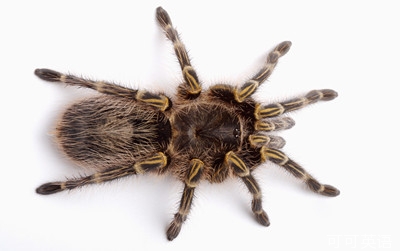科学技术
Sociable spiders
社会性蜘蛛
Come into my parlour
欢迎来做客
A strange example of co-operative behaviour in arachnids
一种懂得合作的不寻常的蜘蛛
SPIDERS are known for many things.
蜘蛛为人熟知的特点很多,
Sociability is not one of them.
但社会性不在其列。
Most spiders are more likely to try to eat their neighbours than befriend them.
多数蜘蛛更有可能想吃掉自己的邻居,而非跟它们做朋友。
Given that there are at least 43,678 species of the critters, though, it is not too surprising that a few have overcome their natural grumpiness and teamed up to form societies.
不过考虑到这种生物至少有43678种,有那么几种能克服天生乖戾的性情结群而居也就不足为奇了。
So far, about two dozen such social spiders have been identified.
目前已知的社会性蜘蛛约有24种。
And among them, something really strange has just been found.
其中还发现了一些奇特之处。
 For one type of spider society turns out to involve two different but closely related species.
For one type of spider society turns out to involve two different but closely related species.
在一种包含蜘蛛的群落中,有两种亲缘关系很近的蜘蛛。
It is as though anthropologists had discovered villages populated both by human beings and chimpanzees.
这就像是人类学家发现村落中既住着人类也住着黑猩猩。
This was discovered by a team led by Lena Grinsted of Aarhus University in Denmark.
这一现象由丹麦奥尔胡斯大学莉娜·格林斯蒂德带领的团队发现。
They were studying a social species of spider called Chikunia nigra, living near Beratan Lake in Bali.
当时他们在研究一种生活在巴厘岛贝拉坦湖畔、名为Chikunia nigra的社会性蜘蛛。
Later, as they looked in more detail at their specimens, they realised its genes and genitalia revealed that it was actually two species, according to their findings just published in Naturwissenschaften.
后来随着对标本研究的日益深入,他们发现基因和生殖器都表明标本分属两个物种。其研究结果新近见刊于《自然科学》。
Exactly what the spiders get out of being social is not clear.
社会性对蜘蛛有何益处目前尚不清楚。
They do not hunt together.
它们并不共同捕食。
One explanation may be that the colony is acting like a giant creche.
一种可能的解释是,这一群体像是大型托儿所。
Ms Grinsted discovered this possibility by experiment.
格林斯蒂德女士通过实验得出了这种可能性。
First, she identified 19 females who were looking after recently hatched young, and another 20 who had eggs.
首先,她找到19只照料新孵化幼虫的雌蜘蛛以及20只刚产过卵的雌蜘蛛。
In each case she introduced an intruder, in the form of a spider from the same colony.
然后,她将来自同一群体的一只蜘蛛作为入侵者分别引入上述两组个体。
Both mothers and mothers-to-be were surprisingly tolerant of what would, in most spider species, be a serious threat.
这些蜘蛛妈妈及准妈妈出人意料地表现出容忍性,而不像多数种类的蜘蛛那样将之视为严重威胁。
Only 40% of the time did they attempt to chase the intruder away, or bite it.
它们只在40%的时间中试图赶走或咬噬入侵者。
Ms Grinsted then took another 40 spiders and swapped some of their broods.
随后格林斯蒂德女士又取了40只蜘蛛并互换其部分幼虫。
The upshot, she found, was that a female was as likely to look after and guard another's brood as she was her own.
她发现雌蜘蛛会将之视为己出,照料、保护幼虫。
Which is intriguing, but not all that extraordinary in social groups which are composed of closely related individuals.
这一现象虽有趣,但在个体亲缘关系相近的群体中也不算罕见。
Except that Ms Grinsted now knows that this cannot always be the case for her spiders, since two different species are involved.
只是格林斯蒂德女士现在已知道她的蜘蛛并非如此,因为其中包含两个物种。
The species in question are pretty similar, which would seem to rule out another common cause of collaboration: that different creatures bring different adaptations to the party, thus dividing the labour of staying alive into specialisms.
而且两种蜘蛛非常相似,这就排除了合作的另一常见原因,即不同生物在适应该群落过程中发生不同变化,从而为生存进行了专门化分工。
Because Ms Grinsted did not know at the time of her experiment that two species were involved, she cannot be sure how many of the fosterings she induced were cross-specific.
因为做实验时格林斯蒂德女士并不知道涉及两个物种,因此她现在无法确定有多少幼虫交换是在种间进行的。
The two species seem more or less equally abundant, so the chances are it was about half of them.
这两个物种似乎一样多,因此可能有一半是种间交换。
If colony members are acting as foster mothers in the wild, something most odd is going on.
如果在自然环境中该群体的成员也乐于做养母,这就是最奇怪之处:
Altruism is not a concept often associated with spiders. Xenophilic altruism is truly bizarre.
利他主义这个概念通常与蜘蛛没什么关系;种间利他主义发生在蜘蛛身上,就更让人难以置信了。
 For one type of spider society turns out to involve two different but closely related species.
For one type of spider society turns out to involve two different but closely related species.
 For one type of spider society turns out to involve two different but closely related species.
For one type of spider society turns out to involve two different but closely related species.